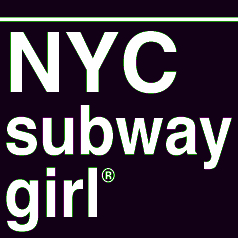Bridging The Nature-Cultural Divide
It might appear illogical that NYC SubwayGirl a subway performer was at the Central Park Woodlands Stewardship conference on October 5th amidst architect students, landscape architects and firms representing top minds in the field for a conversation about stewardship. It actually was as logical as a woodlands thriving deep in the center of an urban environment.
I love NY and I love the Park so I was excited to participate. One of the presenters of the event (Cultural Landscape Foundation) found my sustainability blog (I love search engines), I blogged about the conference. They invited me to come along and see for myself. It was held at the fantastic Museum of The City of New York.
During breaks and a beautiful walk through the Park, I asked my favorite question to a few participants, What's Your Inspiration?
As I explained why I was there, I found my description of myself in the context of the conversation about urban parks, not only interesting, but it actually helped me to define myself a bit more completely than just "I sing in the subway."
I love analogies, so I was trying out the thought of the subway musician as an ecotone (definition: the defining geographic transitional line where valley meets mountain, prairie meets forest, where land meets water), where a stationary musician meets commuters rush, where music meets subway sounds, where my asking "What's your inspiration?" to a stranger meets community.
I learned landscape architecture and stewardship of a public park has to include emotional feeling and experience, something not necessarily associated with riding or commuting in a subway system. NYC Subway Girl attempts to bring these into the conversation. Meeting a commuter who pauses to chat and then asking the question about inspiration, brings out an emotional feeling that is deeply poignant and inspirational itself.
Here I thought I was going to the conference to learn about Central Park (and I did), but I left learning more about myself.
I heard that "if green space are the lungs of the city, then parks are the soul of the city, a lens and window into nature." Christian Zimmerman Prospect Park Alliance
In stewardship of an urban park, we can no longer use the old adage "leave it alone" succumbing to fears about not thinning or felling trees that would positively help restore the landscape designed by man in the first place. "We need to love nature with more intelligence." Charles Birnbaum. That's why the conference entitled Bridging The Nature/Cultural Divide, is so compelling.
One question raised "What do we preserve today?"
Eric Sanderman: "Nature doesn't think of states, but regions." He spoke of Mannahatta (Manhattan of 400 years ago) saying if you dropped an indigenous person into a section of the island, they would know just by looking at the trees, the undergrowth, what kind of habitat it was and the animals that lived there. Same in our 21st century urban environment, "if you were blindfolded and dropped into Times Square, you'd be able to say a lot about the environment." We all have the ability to fit and understand our environment. The point being, that there is a large network that we are all a part of.
Another point raised, if you removed man from the planet, nature would restore, if you removed insects, the environment would collapse. It says a lot doesn't it?
Todd Forrest from the Bronx Botanical Garden: "we've learned we can no longer say Mother knows best in an urban park design," in truth, "the genie was out of the land."
Michael Boland Wildlife Conservation Society: "wildlife doesn't understand the difference between a national park or a city park… we need to connect parks with corridors to allow migration and movement of wildlife (for example: migratory birds "fly corridor"). A wildlands network.
Did you know that the Quail is the state bird of California? Problem is they are all but non existent due to climate change. And the state tree in Illinois is the White Oak, which they no longer plant because they are already in decline. Bright minds throughout the world are learning to adapt to nature's constantly evolving or declining species.
Elizabeth Meyer professor Landscape Architecture University of Virginia started up the second session. "Woodlands are affected by use and abuse. To manage woodlands and wildlife in an urban habitat there needs to be a management philosophy." She further added, "Woodland from a cultural aspect, is a result of designed judgement."
Designer of the evocative and reimagined Queens Plaza, Landscape Architect Margie Ruddick added that "Art helps people connect with a place and helps proprietary commitment." As a subway musician performing in public spaces I see that first hand every time I perform.
It was an truly informative and wonderful day spent with thinkers in the world of landscape architecture. I left feeling empowered and optimistic about the people out in the field working passionately every day to find solutions to better serve communities and humankind while not forgetting nature's involvement.
The clip features inspirations from Charles Birnbaum, founder president Cultural Landscape Foundation and Eric Sanderson, Wildlife Conservation Society, Michael Boland, The Presidio Trust, Alanna Rios, student City College of New York, Christopher Valencia, student City College of New York, Mauro Crestani, EXP US Servces Inc., Joanna Pertz, Landscape Architect, Eddie Krakhmalnikov, University of Minnesota, Margie Ruddick, Landscape Architect, Elizabeth Meyer, Professor Landscape Architecture, University of Virginia
Amazing Gift revealed today: The Central Park Conservancy has received the largest donation ever made to a public park to help us sustain the Park's health for generations. John A. Paulson and the Paulson Family Foundation have given $100 million to help maintain and restore every one of the Park's 843 acres.
Everyone at the Conservancy and for current and future New Yorkers, thank Mr. Paulson for his enormous generosity.
Read more about Mr. Paulson's gift http://ow.ly/eI54S
